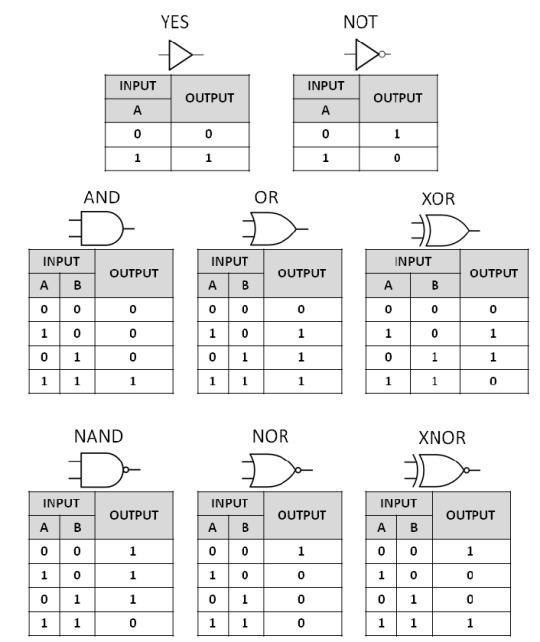#electronics circuit
Explore tagged Tumblr posts
Text
Why does digital elecronics is important for engineering?
Digital electronics is super important in engineering for a bunch of reasons—it's pretty much the backbone of modern technology. Digital electronics powers everything from smartphones and computers to cars and medical devices. Engineers across disciplines need to understand it to design, troubleshoot, or innovate with modern systems.
GET CIRCUIT DESIGNING VIDEO TUTORIAL 👈.

Digital tech allows for very large-scale integration (VLSI), meaning engineers can cram millions of logic gates into a single chip (like microprocessors or memory). It enables powerful, compact, and cost-effective designs.
#digital electronics#engine mechanism#electronics circuit#crank shaft#mechanical arms#mechanical engineering#mechanical parts#two stroke engine#technology#electronics#computing#and gate#digital chip#or gate#not gate#nand gate#nor gate#xor gate#electronic gate#embedded circuit design
4 notes
·
View notes
Text
Important Ohm’s Law Problems for Competitive Exams
Series Circuit Resistance
Three resistors of 5 Ω, 10 Ω, and 15 Ω are connected in series. What is the total resistance?
In a series circuit, total resistance is the sum of all resistances:
Rtotal = R1���+R2+R3 = 5Ω+10Ω+15Ω = 30Ω
Parallel Circuit Resistance
Two resistors, 6 Ω and 12 Ω, are connected in parallel. What is the total resistance?

youtube
GET MORE FREE SOLUTION 👈.
#digital learning#online education#online courses#online tutoring#online learning#electronics components#electronics manufacturing#electronics design#electronics industry#electronics#learn about circuits#basic circuits#electronics circuit#Youtube
0 notes
Text

#technology#old tech#techcore#cybercore#circuit board#serial experiments lain#electronic parts#surrealism#dreamcore#cyber y2k#cyberpunk#tech#coding#90s aesthetic#webcore#old internet#robotics#grimes#cyberpunk aesthetic#art#artwork
1K notes
·
View notes
Text

388 notes
·
View notes
Text

A series of components that were featured in Windell Oskay and Eric Schlaepfer's book, Open Circuits. I highly recommend checking out that book.
580 notes
·
View notes
Text

Day 2211, 12 July 2024
Elantica 'The Boulder' is a sculpture by Tom & Lien Dekyvere. It is made from old circuit boards. It can be found sandwiched between buildings outside the Elizabeth Line station in Canary Wharf, London
#London#Canary Wharf#art#sculpture#artwork#Elantica#boulder#circuit boards#electronics#Tom Dekyvere#Lien Dekyvere#abstract#england#uk
494 notes
·
View notes
Text

ೃ༄ੈ✩‧₊˚
#electronics#circuit#circuit board#flexible circuit board#ccd sensor#ccd cable#canon a85#cyber#cybercore#cyberpunk#orange#flickr#oldweb#old web#2008
185 notes
·
View notes
Text
“ I’ll look for you. I promise. “ - Fission, Builder automaton outbreak.

Fission “died” while trying to search for Proton and Electron, while fighting off whatever things that would attempt to drag them to the scrap pile. (In the East Reactor, of course. If you didn’t read the small fic Fission told the babies to run off to there) When they eventually ran out of power, they rested where they and Gamma would talk, so there would be a possible chance that someone would find them and bring them back. Proton was the one who found their body and since then visited weekly to put small trinkets he found near them, things they thought their previous caretaker would love (metal flowers, old drawings, blueprints, etc). Electron stumbled upon this mourning place which shook the trust between her and Proton (and then they kind of spiralled..).
Proton (mentioned), Fission and Electron are my Gamma Code AU OCs!!
Gamma (mentioned) and Neutron (mentioned) and the DELICIOUS Gamma Code AU belongs to the wonderful @sunnydbeam !! Give her some love!
Bonus angst doodle under cut :)
I had to draw Electrons reaction to Fissions “death” <33 !! (Uh.. eyestrain TW?)

#Listen#I had to >:)#I can’t NOT traumatise them#But also it gives fluff (maybe) if Haz or Neutron or someone can charge Fission again#But who knows#Maybe something destroys their circuits before then#CLOCK IS TICKING AHAHAHA#Anyways next thing I’ll doodle/draw might be intense angst or intense fluff#Either Protons self doubt or Gamma and Fission (and maybe other peoples OCs I’ve seen all of the yummy art) bonding#And Proton Neutron and Eletron fluff#Or I can torture everyone more#HEHE#Fission#Electron#gamma code au#gamma code au oc#oc angst#dca au#dca fandom#tw robot gore#tw eyestrain
98 notes
·
View notes
Text
Why does digital elecronics is important for engineering?
Digital electronics is super important in engineering for a bunch of reasons—it's pretty much the backbone of modern technology. Digital electronics powers everything from smartphones and computers to cars and medical devices. Engineers across disciplines need to understand it to design, troubleshoot, or innovate with modern systems.
GET CIRCUIT DESIGNING VIDEO TUTORIAL 👈.

Digital tech allows for very large-scale integration (VLSI), meaning engineers can cram millions of logic gates into a single chip (like microprocessors or memory). It enables powerful, compact, and cost-effective designs.
#digital circuit design#digital electronics#electronics circuit#and gate#or gate#not gate#complex gate design#vlsi designing
1 note
·
View note
Text


work doodles
#sketchdump#kangel#ame chan#v2#mirage#mv2#adachi rei#rivulet#saint rain world#kasane teto#sebastian solace#<- he was drawn in tuxpaint after work but i needed to fill that corner#drew most of these while testing the electronics in literally hundreds of circuit boards. for 8+ hours straight. exciting (deadpan)#ultrakill#needy streamer overload
327 notes
·
View notes
Text




more 8:11 pictures on a displayyyyy

tiny update.
if you look closely, in the previous post with the display the picture was rendered a little crookedly and it felt like there was not 1 image, but 2. it annoyed me, and i first looked into the code, and then into the program itself that sent the picture to the board. the solution turned out to be completely different - i just needed to save the bitmap file normally, and not anyhow. i did it with paint, so now everything is fine.
oh, and one more thing. this time i used nano instead of uno, although it seems to me there is no special fundamental difference - the pinout is the same.
#richterursidae#arduino#arduino nano#electronics hobby#electronics#811 game#811 vittorino#811 leon tremblay#811 leon#811 dante#811 dante basilio#circuits
96 notes
·
View notes
Note


YOU.

UMMMMMM
#SRIBAFOGBSMFGB#THE WAY I KINDA DIDN’T EVEN NOTICE BUT THATS REALLY FUNNY#you KNOW#that when I was drawing edamame I was like#‘okay what can I put in doc’s hand’#uhhhhh (< the only tool she looked up was something sharp enough for destruction and it’s a micro electronics tool anyway so that’ll do!)#(it’s a circuit board micro inscriber)#BUT ITS HILARIOUS IT LOOKS LIKE I WAS FORESHADOWING#tooootally on purpose guys. 100%#ask#dbhc ask#destruction#dbhc doc#dragonheart2497#literally so funny#art escapades#dbhc theories
405 notes
·
View notes
Text

38 notes
·
View notes
Text

Researchers propose source mask optimization technique in computational lithography, by Zhang Nannan, Chinese Academy of Sciences
#computers#tecnology#lithography#computational lithography#electronics#circuits#integrated circuits#science#physics#engineering
24 notes
·
View notes
Text
Hope you all left milk and cookies out for glabdos portal for pride month
118 notes
·
View notes
Note
engineer something please

I'm actually really proud of this. Three months ago I didn't know anything about electronics, and today I finished up my first home brew radio. Works on the 80m ham band. The switches let you change between AM and CW. It works with a microphone as well. Don't ask what the 741 op amp does, cause I really couldn't tell you, but somehow that makes the 386 work so I can't complain. Anyway. Yeah. Low power but works splendidly. The waveform is also incredibly clean. Took me a few days to get to this point but I'm really really really happy with it!
40 notes
·
View notes